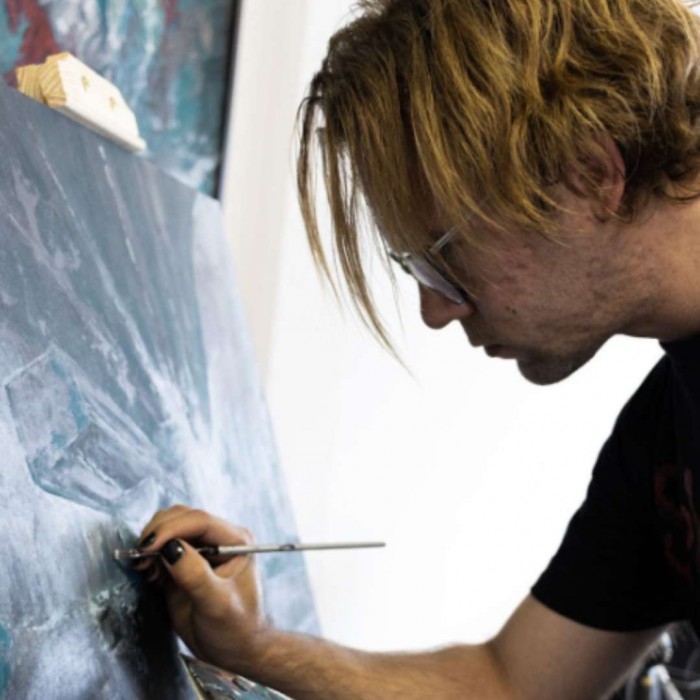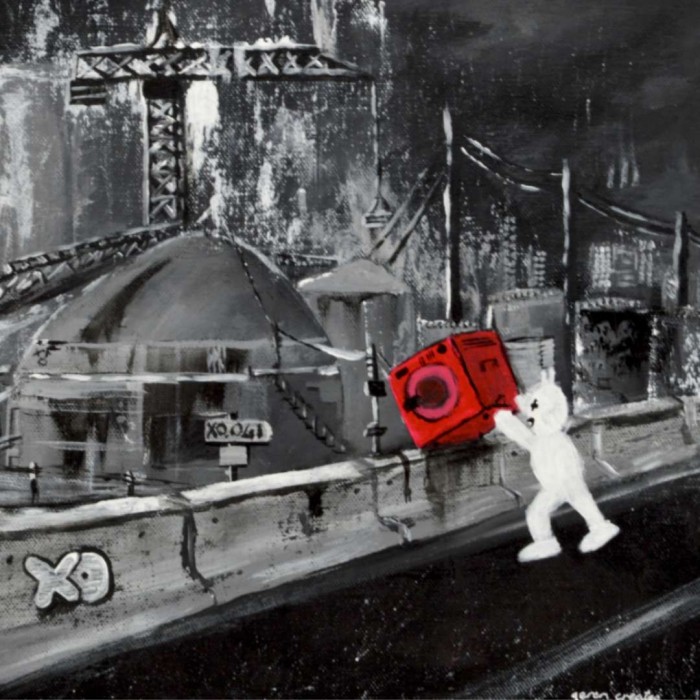Qeren Creates, a multidisciplinary artist from Nelson Mandela Bay currently based in Cape Town, employs virtual and digital mediums to externalise the inner worlds of feeling and thought.
In his locally and internationally exhibited artworks, Qeren invites the viewer to interpret, project and ultimately complete the ‘intended but incomplete message’ he imparts with each piece.
Design Indaba interviewed Qeren about the main character of his artworks, the early inspirations behind his artistic journey and what’s coming up next in 2023.
If you had to define yourself as an artist in three words, what would they be?
Committed, committed, committed.
Commitment to my work encapsulates my whole artistic practice. Commitment to writing down ideas when I feel inspired helps me stay inspired. Commitment to keep putting pen to paper in times of creative block helps me work through it. Commitment to regularly making new work develops my technique.
It all really starts with a commitment to the work. All my creativity and flow stem from that.
Many of your pieces feature the same character. Tell us about this character and its origins.
The character is named Imaginary Friend and represents the childlike spark of hope we start our lives with, before we become jaded and cynical adults. My current body of work explores how this spark of hope responds to different environments and things happening in the world. I hope that through my work people will find the freedom to rediscover their own imaginary friend by rediscovering their own childhood hopes for themselves and for the world we live in.
The design of Imaginary Friend draws on a few cultural icons from my childhood in the late 1990s and early 2000s. The most notable inspiration for his design is the animated television character Dub, who was the face of the SABC2 Tube children's programming block. Imaginary Friend’s design is also influenced by the band logos for Nirvana and Blink-182, [American artist] Kaws’s ‘Companion’, Mickey Mouse and others.
Who are your creative inspirations?
My favourite visual artists are [American artist] Daniel Arsham, [the late American fashion designer] Virgil Abloh, Kaws and [Japanese artist] Takashi Murakami. That said, my actual work is more often inspired by authors and artists unknown. Something as mundane as walking around my neighbourhood will trigger a thought that leads to an idea that leads to an artwork. The ‘authors’ of these inspirations are, for example, builders from a bygone era, overheard conversations, graffiti, obscure adverts and signage. I find that inspiration is everywhere if you’re committed to looking for it.
You’ve cited punk rock, skate culture, hip-hop and street art as some of the early inspirations behind your artistic journey. How do these influence your work today?
I still draw from those influences, although I am more open to being inspired by influences outside of my comfort zone. For example, I just returned from a two-week artist’s residency in the Tankwa Karoo, where I didn’t listen to music, see any graffiti or signage, or have access to any sort of pop-culture inspiration. I found that being open to different sources of inspiration gave me new perspectives and had a positive impact on the work I produced in that period.
Describe your creative process.
The core of my creative process is the ‘WIDRFN’ (write it down right now) method. When I have an idea, it goes down into text immediately. From there, I’ll mull over it for a day or two, and decide which medium would best support the idea or feeling I’d like to convey.
I rarely sketch out my ideas before starting work on them. There are exceptions, but for the most part, ideas flow better for me when I don’t cage them in lines from the start. I find it better to take time to rework part of an artwork in its final medium, rather than to try to plan it perfectly from the start. There is a lot of inspiration to be found in letting yourself make ‘mistakes’, so I’d rather spend a long time reworking a piece of art into what it needs to be than overplanning it into something it’s not.
What has been a career highlight for you so far?
There have been a few firsts for me in the last year or so, and as much as I’m overjoyed at the growth, traction and recognition that my work has started receiving, knowing that my art has meant something to someone has to be my biggest highlight. Hearing about how someone felt something, thought something and rediscovered something about themselves — these moments are the most meaningful to me by far.
What’s up next for you in 2023? What are you working on at the moment?
I’m busy wrapping up my solo exhibition in Cape Town, and I have a few more exhibitions in South Africa and abroad planned for later this year. There are also some special projects and releases that I will share more about in the months to come. The best way to stay up to date with my exhibitions, projects and collabs is my Instagram (@qeren_creates) and my website (qerencreates.com).
Read more
Photographs: Qeren Creates.








